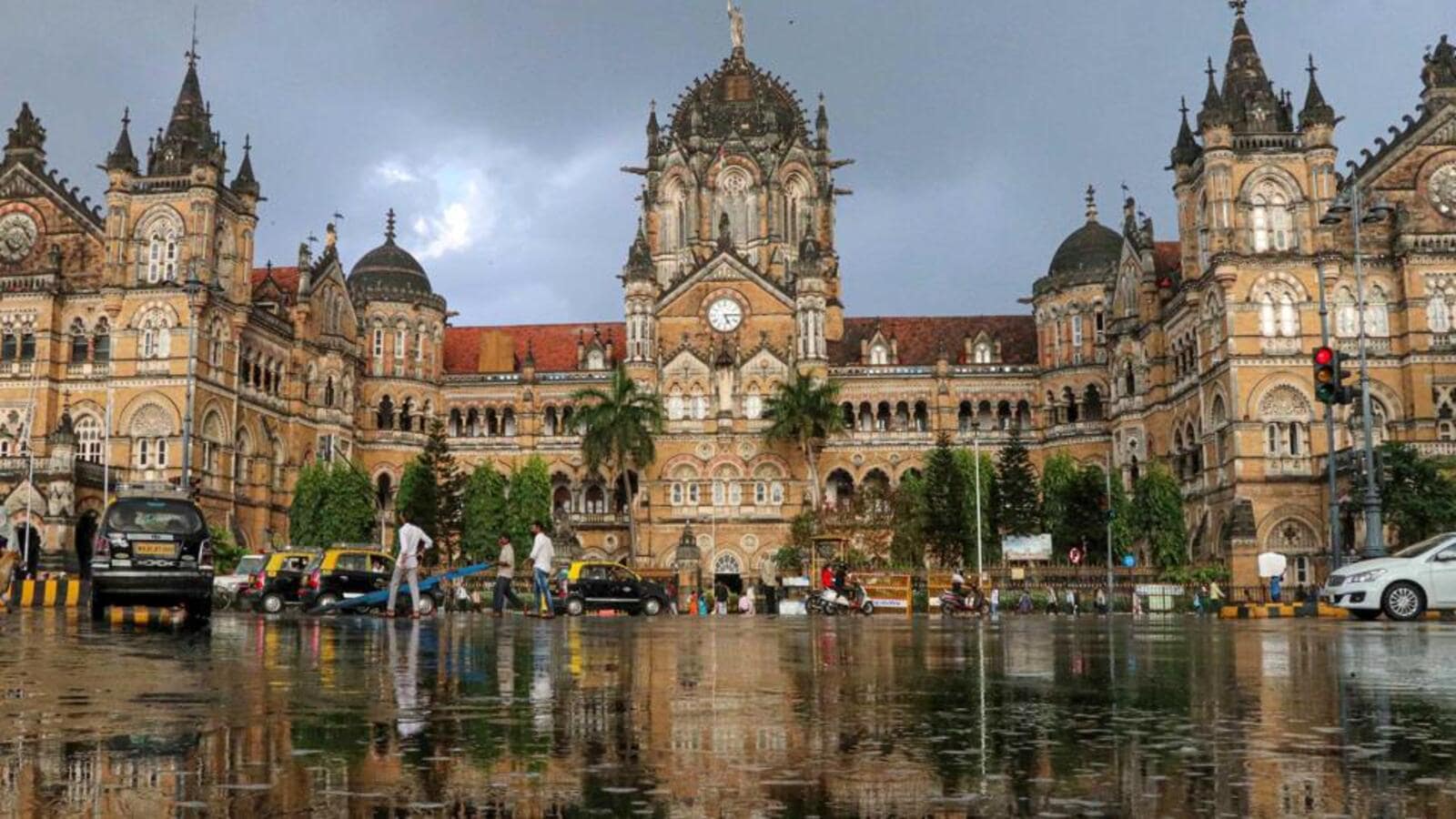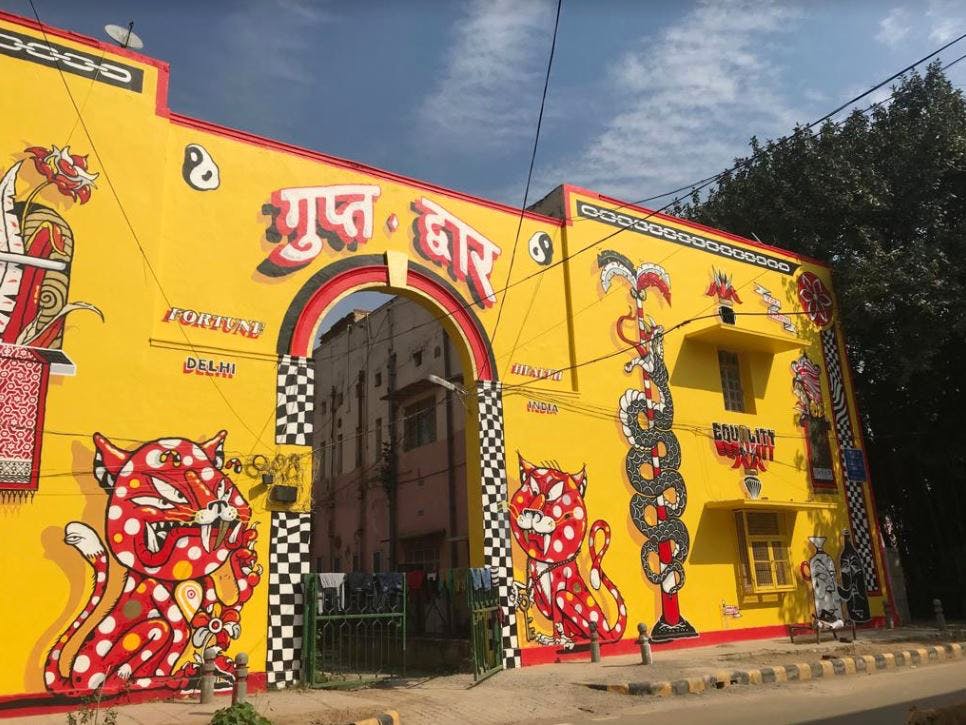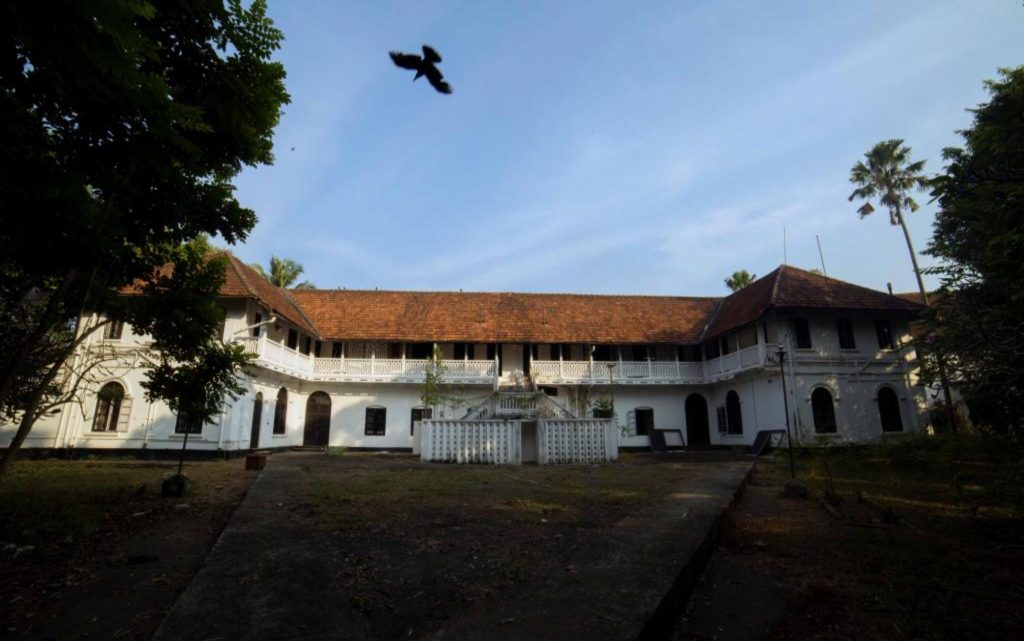Introduction
Creative solutions, such as adaptive reuse, which repurposes historic buildings for modern purposes while preserving their historical and spiritual relevance, are necessary to preserve historical heritage, especially religious buildings. Careful architectural design principles are used to painstakingly restore and adapt new uses while maintaining the original spirit. To conserve these architectural treasures for future generations, it is important to strike a balance between the need to preserve historical components and contemporary necessities. This article looks at examples of adaptive reuse from India and outside. For instance, when one reuse or repurposes things as opposed to making them from scratch, the impact on the environment is minimised. The same applies to buildings because existing ones can be changed to serve other purposes while keeping their initial attributes unchanged. That’s how cities come alive again through adaptive re-use which is a way of giving old buildings new life while preserving their history value. This is done because another function may be identified for an existing building that will maintain its historic worth without causing any trouble to the area surrounding it. In fact, adaptive reuse is a delicate balance between innovation and preservation.
Ways to Adaptively Re-Use an Architectural Building
There are various types of Adaptive reuse in Architecture that designers and urban planners can apply. Different forms are applied while re-evaluating a building/architectural structure, or historical space.
At first, we have the Historical Preservation. Historic preservation focuses on maintaining a building’s original form, integrity, and materials. The Taj Mahal, located in Agra, Uttar Pradesh, is a prime example of historical preservation efforts in the country. The preservation of the Taj Mahal focuses on maintaining its original form, materials, and architectural integrity. While efforts are made to prevent significant alterations to the exterior, minimal upgrades and adjustments are undertaken to ensure the monument meets modern safety standards and remains accessible to visitors. Government standards and guidelines outline the preservation practices to safeguard this iconic historical site for future generations.

Then we have Renovation. Renovating a building usually entails fixing and updating it while keeping its original function. The Chhatrapati Shivaji Maharaj Terminus (formerly known as Victoria Terminus) in Mumbai is a notable example of renovation. Originally built as a railway station in the late 19th century, it underwent extensive renovation to preserve its historical significance while accommodating modern needs. The renovation involved refurbishing the building’s interiors, upgrading facilities, and enhancing structural stability while retaining its original function as a major transportation hub. This renovation project successfully blended historical preservation with functional upgrades, ensuring the continued relevance and usability of this iconic architectural landmark.

On the other hand, adaptive reuse goes a step further by giving the building a new purpose that changes how it is used. Integrating an existing structure into a new construction entails building around it to preserve its essential features in a contemporary setting. The creative conversion of Denmark’s Jaegersborg Water Tower into student accommodation by Dorte Mandrup is a prime example of integration. Contrarily, facadism is an urban design technique in which the outside of a building is the only part that remains standing after the remainder is demolished and rebuilt with new construction. The goal of this procedure, called a facadectomy, is to preserve the historical appearance of the streetscape, but it can be expensive because the delicate facade needs to be supported and protected during reconstruction. While some supporters of historic preservation say that facadism is insufficient to preserve a building’s integrity, supporters counter that it is a better alternative than eliminating a city’s historical legacy.

India and The Role of Adaptive Re-Using
India, with a rich history spanning over 4,000 years, boasts some of the world’s most impressive architectural marvels crafted by our ancestors. However, historical artefacts in the country can be broadly categorised into two groups. The first encompasses monuments with significant historical value, drawing countless tourists due to their unique design, grandeur, and original purpose. The second group includes ancient structures like palaces and havelis, often overlooked despite their historical and cultural importance, leading to underutilisation. Hence, it is imperative to rejuvenate these historic edifices by repurposing them for modern needs, ensuring that future generations can appreciate and connect with our heritage. Collaboration among city planners, architects, and preservationists is essential to explore the environmental benefits of adaptive reuse. As urban areas continue to expand, the demand for new buildings rises, making adaptive reuse a sustainable solution. Transforming heritage buildings into functional and accessible spaces not only enriches neighborhoods but also strengthens the bond between present and future generations, fostering societal sustainability. Moreover, this approach creates employment opportunities and boosts tourism, bolstering local economies. Additionally, adaptive reuse reduces embodied energy, contributing to environmental sustainability by minimising resource consumption throughout the product lifecycle.
Discovering Indian Examples of Adaptive Reuse
In a country such as India, we have ample spaces and structures that have been renovated and remodelled to meet urban demands and changed in ways to adapt to new surroundings. In many cases, the architects have not considered the historical and cultural significance of the space and simply remodelled a building without any conservation outlook, but in a few instances – both the synergies have merged beautifully together to breathe new air into older and forgotten structures. Kirtida Unwalla, a conservation architect from Mumbai has helmed one such project. This was when the high-end retailer Zara moved into the 110-year-old, five-story Ismail Building, which now brightens the street it stands on. The Rajasthani palaces were the scene of some of India’s first instances of adaptive reuse. One of the first was the Neemrana Fort from the fifteenth century, which was transformed into an opulent hotel in 1991. Additional examples are the 19th-century Falaknuma Palace in Hyderabad and the 18th-century Lake Palace in Udaipur, both of which are presently extremely opulent hotels.

Another recent example is a structure in Bengaluru. Originally constructed in the city as an orphanage in 1876, Cinnamon is a boutique business now. Radhika Poddar, the brand’s owner, says in an article with Hindustan Times, “We chose the location because restoring it would be a way to remember Bangalore as it was.” Coming closer to home, we have Haveli Dharampura in Chandni Chowk was renovated by BJP MP and activist Vijay Goel. After the restoration commenced, the ample rooms and corridors appeared ideally suited for a hotel. Originally projected to take six months, the project extended well beyond six years, with the hotel finally welcoming its first guests in 2016. Today, it is a posh historical hotel with kathak and classical music events. Another similar cultural space in Old Delhi is the newly opened Kathika Cultural Centre, situated in Sitaram Bazaar, near Hanuman Mandir in Gali Khatikan. It is a new ‘haveli-museum’ inspired by traditional storytelling. Featuring two havelis filled with fascinating artifacts, vintage items, and a quaint courtyard. One haveli, Neem Ki Haveli, surrounds a majestic neem tree, adding to its old-school charm. In Goa, Raya Shankar Architects transformed the Soro Village Pub which was once an industrial warehouse from the 1940s.

Rather than preserving a place for a specific period, adaptive reuse gives it a new cycle by examining the options between destruction and rehabilitation.Through adaptive reuse, it is possible to maintain the historic context and current use of an environment while also creating one that is sustainable and individually constructed. Especially in a country such as India, which is replete with old and forgotten structures, giving them a new lease in modern times while having been restored is just cherry on the cake!
Feature image: Aspinwall House, A Historic Landmark Transformed into a Hub of Creativity. Currently serving as an exhibition space for the Kochi-Muziris Biennale, this 178-year-old building stands as a testament to Kochi’s rich history and vibrant art scene. | Courtesy: Shahpedia
References:
- https://www.indiatoday.in/magazine/leisure/story/20230911-old-building-new-purpose-living-heritage-2429681-2023-09-01
- https://www.autodesk.com/design-make/articles/adaptive-reuse
- https://www.hindustantimes.com/art-and-culture/check-out-breathtaking-examples-of-adaptive-reuse-in-five-indian-cities/story-AuXRN4ydcDyvOEF4FFEDrK.html
- Doshi, S., & Devi, T. S. (2023). Adaptive Reuse of Historic Building. International Journal for Multidisciplinary Research (IJFMR), 5(3), 1. Amity School of Architecture & Planning, Amity University Chhattisgarh. E-ISSN: 2582-2160. Retrieved from www.ijfmr.com.
Was Guwahati Ready for Retail Design? Ashish Agarwal’s Journey Proclaims the Answer (Part-1)

Contributor





